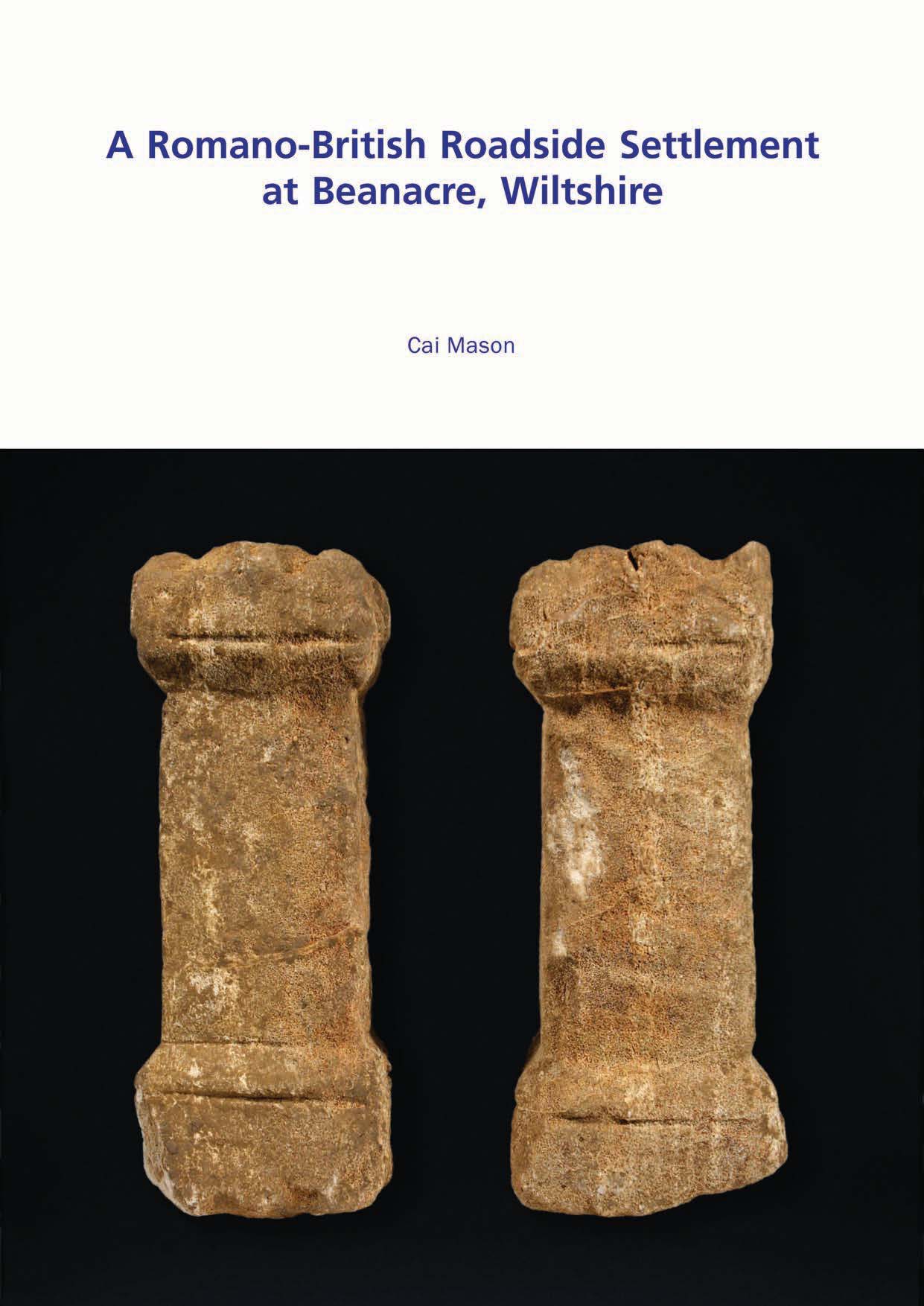A Romano-British Roadside Settlement at Beanacre, Wiltshire
Cai Mason

Description
Archaeological excvations during the construction of a new supply line for the electrification of the Great Western Railway Main Line, uncovered part of a large, previously unknown, Romano-British settlement along the main road between the Roman towns of Aquae Sulis and Cunetio. The full extent of the settlement is unknown but evidence from metal detector finds and field names suggests that it may have extended for at least 0.9 km along the Roman road.
The Romano-British settlement appears to have been established in the mid-/late 1st century AD, and was continually occupied until the end of the 4th century. The settlement contained roads, buildings of stone and timber construction, a crop drier, wells, pits. human and animal burials, agricultural enclosures and evidence for metalworking, but was most notable for its large number of cooking ovens.
The ceramic and metal finds ate indicative of a highly Romanised settlement, whilst the animal bone assemblage and plant remains suggest that the provision of food - particularly roast pork and bread - was an important part of the settlement's economy. The discovery of a pair of small stone altars provide evidence for a roadside shrine.
Details
| Published | Published By | Pages | ISBN | ||||||||||||||||||||||||||||||||||||||||||||||||||||||||||||||||||||||||||||||||||||||||||||||||
|---|---|---|---|---|---|---|---|---|---|---|---|---|---|---|---|---|---|---|---|---|---|---|---|---|---|---|---|---|---|---|---|---|---|---|---|---|---|---|---|---|---|---|---|---|---|---|---|---|---|---|---|---|---|---|---|---|---|---|---|---|---|---|---|---|---|---|---|---|---|---|---|---|---|---|---|---|---|---|---|---|---|---|---|---|---|---|---|---|---|---|---|---|---|---|---|---|---|---|---|
| Jan. 1, 2018 | Wessex Archaeology | None | 978-1-911137-08-5 | ||||||||||||||||||||||||||||||||||||||||||||||||||||||||||||||||||||||||||||||||||||||||||||||||
| License Information | |||||||||||||||||||||||||||||||||||||||||||||||||||||||||||||||||||||||||||||||||||||||||||||||||||
| Copyright © Wessex Archaeology. This work is openly licensed via CC BY-NC-ND 4.0 | |||||||||||||||||||||||||||||||||||||||||||||||||||||||||||||||||||||||||||||||||||||||||||||||||||
